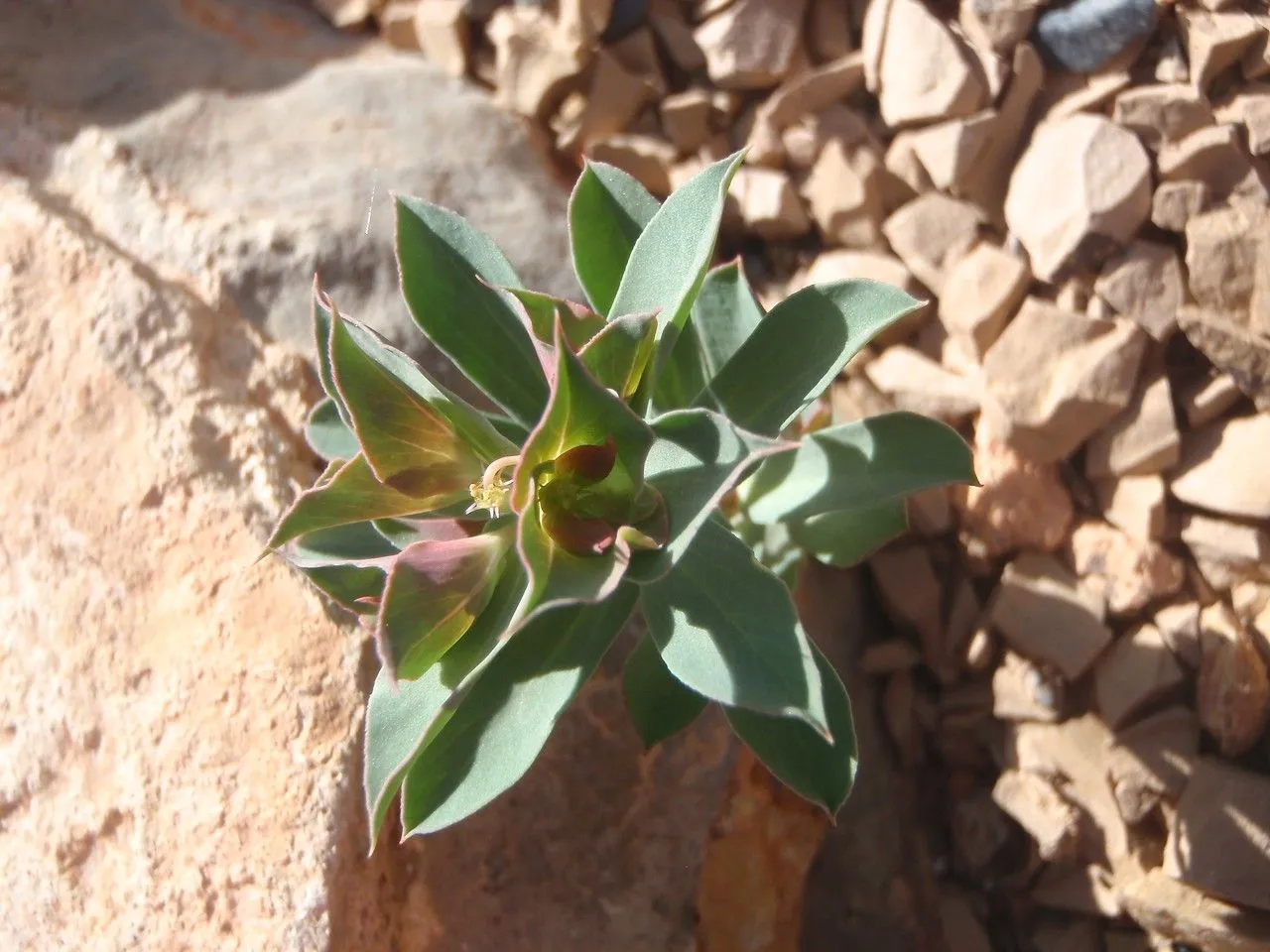
Author: L.
Bibliography: Sp. Pl.: 456 (1753)
Year: 1753
Status: accepted
Rank: species
Genus: Euphorbia
Vegetable: False
Observations: Macaronesia, Medit. to W. Himalaya, Europe to Mongolia
Sickle spurge, scientifically known as Euphorbia falcata, is a fascinating plant species that boasts a rich distribution and diverse habitats. Originating from the prominent botanical classification bestowed by Linnaeus in 1753, the species is a significant member of the Euphorbiaceae family.
The geographic range of sickle spurge is notably expansive, spanning several continents and diverse ecological regions. It is found in the exotic archipelagos of Macaronesia, known for their unique flora and fauna, and stretches across the Mediterranean basin, a hotspot of biodiversity. Moving further east, it reaches as far as the Western Himalayas — a region renowned for its majestic landscapes and rich plant diversity — and extends its presence across Europe to the steppes of Mongolia.
Euphorbia falcata exhibits a remarkable adaptability to various climates and terrains within its broad range. Its presence in such diverse geographical areas underscores its resilience and adaptability to different environmental conditions. The plant typically flourishes in regions with well-drained soils, ranging from rocky outcrops to grasslands, thriving in both temperate and subtropical climates.
The morphology of the sickle spurge is characterized by its unique crescent-shaped or “sickle” leaves, from which it derives its common name. These distinctive leaves, combined with the plant’s sprawling growth habit, make it easily recognizable in the wild. The plant’s reproductive strategy includes producing small, but numerous, seed capsules that burst open to disperse seeds, facilitating widespread propagation across its habitats.
Euphorbia falcata has been observed and recorded by numerous botanists and naturalists over centuries, with its first detailed description appearing in Linnaeus’s seminal work, “Species Plantarum” in 1753. The plant’s evolutionary adaptations and extensive range make it an interesting subject of study for botanists, ecologists, and plant enthusiasts alike.
In conclusion, the sickle spurge is a notable species that highlights the complexity and adaptability of the Euphorbiaceae family. Its widespread distribution from Macaronesia through the Mediterranean to the Western Himalayas and as far as Mongolia exemplifies its ecological versatility. This species continues to intrigue and inspire those who study the natural world.
Dan: segl-vortemælk
Deu: sichel-wolfsmilch
Eng: sickle spurge, sickle-leaf spurge
Spa: lechetrezna tonta
Por: leiteira-das-trêsquilhas
Ces: mlie, pryšec srpovitý
Swe: åkertörel
En: Sickle spurge, Sickle-leaf spurge
Ar: لبين (لِبين)، لبينه (لِبيْنه)
Ca: Lleterola falcada
Cs: Mlie, Pryšec srpovitý
Da: Segl-vortemælk
Fi: Sirppityräkki
Fr: Euphorbe à cornes en faucille, Euphorbe en faux
De: Sichel-Wolfsmilch, Sichelblättrige Wolfsmilch
He: חלבלוב מגלי
It: Euforbia falcata
Pt: Leiteira-das-trêsquilhas
Es: Lechetrezna tonta
Sv: Åkertörel
© copyright of the Board of Trustees of the Royal Botanic Gardens, Kew.
Taken Jun 9, 2020 by Llandrich anna (cc-by-sa)
Taken Jul 17, 2021 by Sylvain Piry (cc-by-sa)
Taken May 30, 2020 by Llandrich anna (cc-by-sa)
Taken Jun 24, 2000 by Tela Botanica − Liliane ROUBAUDI (cc-by-sa)
Taken May 12, 2021 by Emanuele Santarelli (cc-by-sa)
Taken May 12, 2021 by Emanuele Santarelli (cc-by-sa)
Taken Apr 5, 2017 by Tela Botanica − Genevieve BOTTI (cc-by-sa)
Taken May 12, 2021 by Emanuele Santarelli (cc-by-sa)
Taken Jun 10, 2009 by Tela Botanica − Mathieu MENAND (cc-by-sa)
Taken Aug 27, 2022 by Manuëlle (cc-by-sa)
Taken Jul 21, 2020 by djobrane benayache (cc-by-sa)
Taken Jul 21, 2020 by djobrane benayache (cc-by-sa)
Taken May 12, 2021 by Emanuele Santarelli (cc-by-sa)
Taken Jul 15, 2002 by Photoflora – Benoit BOCK (©)
Taken May 15, 2018 by Photoflora – Benoit BOCK (©)
Taken Jun 30, 1852 by Tela Botanica − Herbier PONTARLIER-MARICHAL (cc-by-sa)
Taken Jan 1, 1970 by Photoflora – L’Abbé COSTE (©)
Taken Jun 11, 2008 by Tela Botanica − Mathieu MENAND (cc-by-sa)
Taken Apr 5, 2017 by Tela Botanica − Genevieve BOTTI (cc-by-sa)
Taken Apr 22, 2017 by Tela Botanica − Genevieve BOTTI (cc-by-sa)
Taken Apr 22, 2017 by Tela Botanica − Genevieve BOTTI (cc-by-sa)
Taken Jun 24, 2000 by Tela Botanica − Liliane ROUBAUDI (cc-by-sa)
Taken Aug 27, 2022 by Manuëlle (cc-by-sa)
Taken Jul 17, 2015 by Tela Botanica − Jean-Claude BOUZAT (cc-by-sa)
Taken Jul 17, 2015 by Tela Botanica − Jean-Claude BOUZAT (cc-by-sa)
Taken Jul 17, 2015 by Tela Botanica − Jean-Claude BOUZAT (cc-by-sa)
Taken Jul 17, 2015 by Tela Botanica − Jean-Claude BOUZAT (cc-by-sa)
Taken Jul 17, 2015 by Tela Botanica − Jean-Claude BOUZAT (cc-by-sa)
Growth habit: Forb/herb
Ph maximum: 8.0
Ph minimum: 7.5
Light: 8
Atmospheric humidity: 4
Bloom months: [‘jun’, ‘jul’, ‘aug’, ‘sep’]
Soil nutriments: 6
Family: Myrtaceae Author: (F.Muell.) K.D.Hill & L.A.S.Johnson Bibliography: Telopea 6: 402 (1995) Year: 1995 Status:…
Family: Rubiaceae Author: Pierre ex A.Froehner Bibliography: Notizbl. Bot. Gart. Berlin-Dahlem 1: 237 (1897) Year:…
Family: Sapindaceae Author: Koidz. Bibliography: J. Coll. Sci. Imp. Univ. Tokyo 32(1): 38 (1911) Year:…
Family: Asteraceae Author: A.Gray Bibliography: Pacif. Railr. Rep.: 107 (1857) Year: 1857 Status: accepted Rank:…
Family: Fabaceae Author: Medik. Bibliography: Vorles. Churpfälz. Phys.-Ökon. Ges. 2: 398 (1787) Year: 1787 Status:…
Family: Aspleniaceae Author: (Cav.) Alston Bibliography: Bull. Misc. Inform. Kew 1932: 309 (1932) Year: 1932…